Transcription of 11 CHAPTER 11: FOOTINGS - site.iugaza.edu.ps
1 CHAPTER ELEVEN FOOTINGS 111 CHAPTER 11: FOOTINGS Introduction FOOTINGS are structural elements that transmit column or wall loads to the underlying soil below the structure. FOOTINGS are designed to transmit these loads to the soil without exceeding its safe bearing capacity, to prevent excessive settlement of the structure to a tolerable limit, to minimize differential settlement, and to prevent sliding and overturning. The settlement depends upon the intensity of the load, type of soil, and foundation level. Where possibility of differential settlement occurs, the different FOOTINGS should be designed in such away to settle independently of each other. Foundation design involves a soil study to establish the most appropriate type of foundation and a structural design to determine footing dimensions and required amount of reinforcement.
2 Because compressive strength of the soil is generally much weaker than that of the concrete, the contact area between the soil and the footing is much larger than that of the columns and walls. Footing Types The type of footing chosen for a particular structure is affected by the following: 1. The bearing capacity of the underlying soil. 2. The magnitude of the column loads. 3. The position of the water table. 4. The depth of foundations of adjacent buildings. FOOTINGS may be classified as deep or shallow. If depth of the footing is equal to or greater than its width, it is called deep footing, otherwise it is called shallow footing. Shallow FOOTINGS comprise the following types: CHAPTER ELEVEN FOOTINGS 21- Isolated FOOTINGS : (a) (b) Figure : (a) Square isolated footing; (b) Rectangular isolated footing An isolated footing is used to support the load on a single column.
3 It is usually either square or rectangular in plan. It represents the simplest, most economical type and most widely used footing. Whenever possible, square FOOTINGS are provided so as to reduce the bending moments and shearing forces at their critical sections. Isolated FOOTINGS are used in case of light column loads, when columns are not closely spaced, and in case of good homogeneous soil. Under the effect of upward soil pressure, the footing bends in a dish shaped form. An isolated footing must, therefore, be provided by two sets of reinforcement bars placed on top of the other near the bottom of the footing. In case of property line restrictions, FOOTINGS may be designed for eccentric loading or combined footing is used as an alternative to isolated footing.
4 Figure shows square and rectangular isolated FOOTINGS . Depth of Footing The depth to which foundations shall be carried is to satisfy the following: a. Ensuring adequate bearing capacity. CHAPTER ELEVEN FOOTINGS 3b. In the case of clay soils, FOOTINGS are to penetrate below the zone where shrinkage and swelling due to seasonal weather changes are likely to cause appreciable movement. c. The footing should be located sufficiently below maximum scouring depth. d. The footing should be located away from top soils containing organic materials. e. The footing should be located away from unconsolidated materials such as garbage. All FOOTINGS shall extend to a depth of at least meter below natural ground level.
5 On rock or such other weather-resisting natural ground, removal of the top soil may be all that is required. In such cases, the surface shall be cleaned, so as to provide a suitable bearing. Usually FOOTINGS are located at depths of to meters below natural ground level. Pressure Distribution Below FOOTINGS The distribution of soil pressure under a footing is a function of the type of soil, the relative rigidity of the soil and the footing, and the depth of foundation at level of contact between footing and soil. A concrete footing on sand will have a pressure distribution similar to Figure When a rigid footing is resting on sandy soil, the sand near the edges of the footing tends to displace laterally when the footing is loaded.
6 This tends to decrease in soil pressure near the edges, whereas soil away from the edges of footing is relatively confined. On the other hand, the pressure distribution under a footing on clay is similar to Figure As the footing is loaded, the soil under the footing deflects in a bowl-shaped depression, relieving the pressure under the middle of the footing. For design purposes, it is common to assume the soil pressures are linearly distributed. The pressure distribution will be uniform if the centroid of the footing coincides with the resultant of the applied loads, as shown in Figure (a) (b) (c) Figure : Pressure distribution under footing; (a) footing on sand; (b) footing on clay; (c) equivalent uniform distribution CHAPTER ELEVEN FOOTINGS Ultimate Bearing Capacity of Soil The maximum intensity of loading at the base of a foundation which causes shear failure of soil is called ultimate bearing capacity of soil, denoted by uq.
7 Allowable Bearing capacity of Soil The intensity of loading that the soil carries without causing shear failure and without causing excessive settlement is called allowable bearing capacity of soil, denoted by aq. It should be noted that aq is a service load stress. The allowable bearing capacity of soil is obtained by dividing the ultimate bearing capacity of soil by a factor of safety on the order of to The allowable soil pressure for soil may be either gross or net pressure permitted on the soil directly under the base of the footing. The gross pressure represents the total stress in the soil created by all the loads above the base of the footing. These loads include: (a) column service loads; (b) the weight of the footing; and (c) the weight of the soil on the top of the footing, or columnfootingsoilgrossqqqq++= ( ) For moment and shear calculations, the upward and downward pressures of the footing mass and the soil mass get cancelled.
8 Thus, a net soil pressure is used instead of the gross pressure value, or soilfootinggrossnetqqqq = ( ) Figure shows schematic representation of allowable gross and net soil pressures. CHAPTER ELEVEN FOOTINGS 5 (b) Figure : Gross and net soil pressures; (a) gross soil pressure; (b) net soil pressure Concentrically loaded FOOTINGS If the resultant of the loads acting at the base of the footing coincides with the centroid of the footing area, the footing is concentrically loaded and a uniform distribution of soil pressure is assumed in design , as shown in Figure The magnitude of the pressure intensity is given by APq= ( ) where A is the bearing area of the footing, and P is the applied load.
9 Figure : Concentrically loaded footing (a) CHAPTER ELEVEN FOOTINGS design of Isolated FOOTINGS design of isolated rectangular FOOTINGS is detailed in the following steps. 1- Select a trial footing depth. According to ACI Code , depth of footing above reinforcement is not to be less than 15 cm for FOOTINGS on soil. Noting that cm of clear concrete cover is required if concrete is cast against soil, a practical minimum depth is taken as 25 cm. 2- Establish the required base area of the footing. The allowable net soil pressure is ()()()()cfsccallallhdhgrossqnetq = where ch is assumed footing depth, fd is distance from ground surface to the contact surface between footing base and soil, c is weight density of concrete, and s is weight density of soil on top of footing.
10 Based on ACI Code , base area of footing is determined from unfactored forces and moments transmitted by footing to soil and the allowable soil pressure evaluated through principles of soil mechanics. The required base area of the footing is obtained by dividing the column service loads by the allowable net soil pressure of the soil, or reqA = ()netqPPallLD+ ( ) where DPand LP are column service dead and live loads respectively. Select appropriate L, and B values, if possible, use a square footing to achieve greatest economy. 3- Evaluate the net factored soil pressure. Evaluate the net factored soil pressure by dividing the factored column loads by the chosen footing area, or () += ( ) 4- Check footing thickness for punching shear.



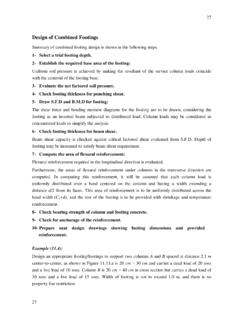
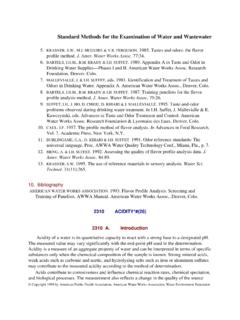
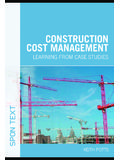

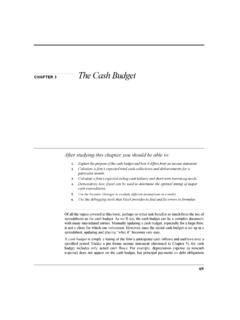

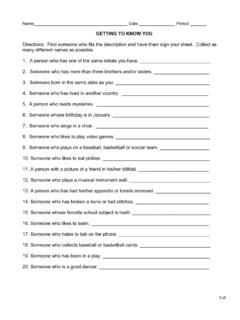

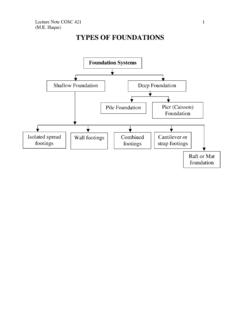
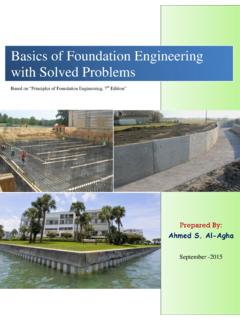


![Pile Foundation Design[1] - ITD](/cache/preview/7/1/b/5/4/9/2/e/thumb-71b5492ea36fbc0a87c29e49c6fa8bff.jpg)



